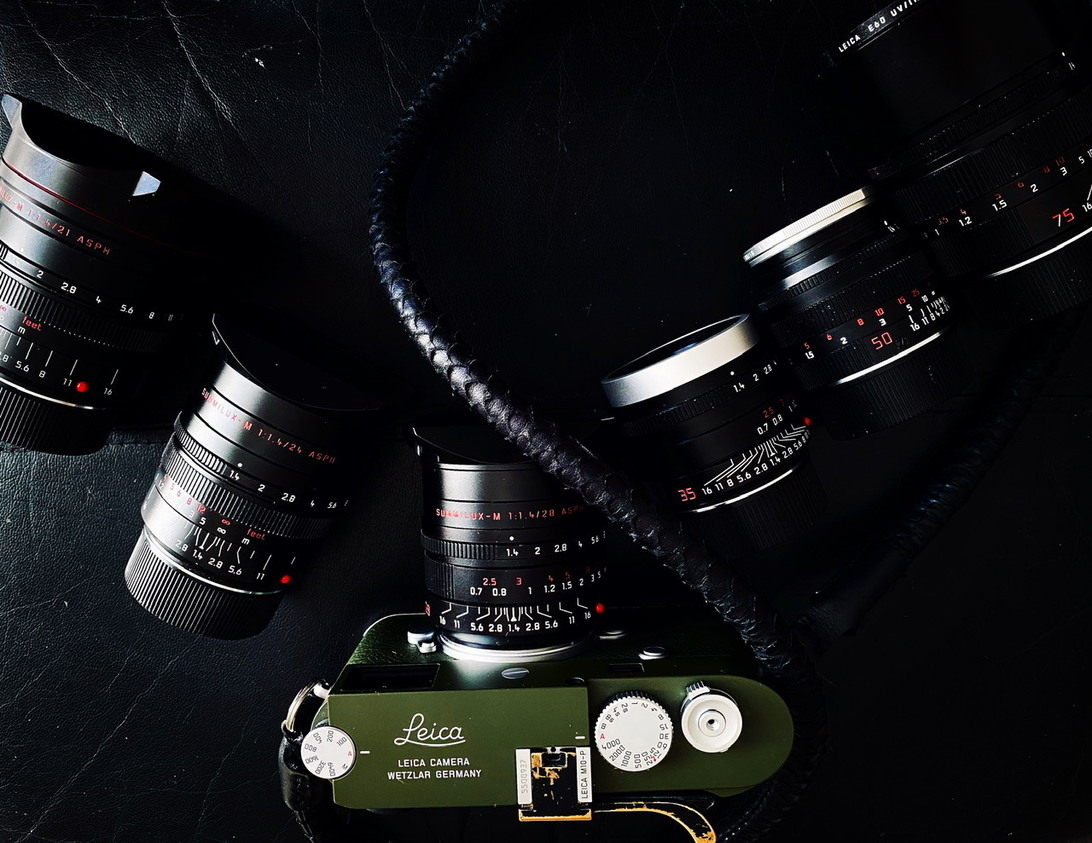Search the Community
Showing results for tags 'sonnar'.
-
One “dream” lens has kept a very special yearning status of desire in my complex photographic universe. It was probably the first superfast lens, made by Teikoku Optical Industries of Japan back in 1953. Zunow 50mm f/1.1, a Sonnar derivate, was produced in small quantities and is considered a very rare collector's item today. The lens is highly sought after by vintage lens enthusiasts and photographers who appreciate its unique render. Zunow experienced financial difficulties, and the company eventually closed its doors in 1961, so not a lot is known about them (fun fact: they made their own Leica copy prototype called Teica, never shown to public), but their legendary lens changed the Japanese optical roadmap forever and prompted Nikon to develop own 50/1.1 version three years later. I have also been pondering on the idea of owning one single lens from MS Optics (former MS Optical R&D, as per thread title), the well-known Japanese lens manufacturer that specializes in producing handmade lenses for rangefinder cameras, for quite a while. As we all know, the company was founded by Sadayasu Miyazaki, a skilled telescope and lens designer slash technician who has over 40 years of experience in the field. Mr. Miyazaki is the driving force behind MS Optics, and all of the company's lenses are made in small batches. That means they have all been designed and hand assembled by the man in the past 13 years or so. MS Optics lenses are known for their unique optical characteristics and vintage aesthetic, and they are usually revamped old designs that are now mostly collectors’ items, sold in a semi-affordable package with hand drawn MTF charts and dubious sample variation & QC. Now imagine the good old classic Bertele Zeiss Sonnar 1.5/50mm from 1932 Contax era and the Teikoku Zunow having a baby, artificially inseminated by the conversion skills of one Miyazaki-san. Phillip Reeve called it “probably Miyazaki’s most famous lens”. The MS Optical R&D Sonnetar 1.1 was born a little over 10 years ago, bearing the strongest similarities to its “mother”, the classic Zunow master of light. Various levels of frustration when using non-native M mount lenses on digital M bodies come to mind. Usually those are minor nuisances like no hard stops beyond 0.7m on Voigtlander lenses, LTM threads unscrewing during fast barrel rotating moves, bottom cut adapters not covering the digital M's 6-bit reader resulting in »no lens detected« message, some non-M lenses not having the same rangefinder coupling, but nothing can compete with the frustration of using MS Optics lenses on your digital M. One user summarized the experience as “fiddly, pain-in-the-rear handling in exchange for the benefits of minuscule size”. I will not go into detail about my harsh claim (those who own or have used MS lenses will know exactly what I mean), nor will I review my new Sonnetar 1.1 here. There are several threads that did that all in the forum already. By far one of the best outside reviews, listing the virtues and frustrations of this idiosyncratic lens (written by Dante Stella) can be found here. https://themachineplanet.wordpress.com/2015/11/12/ms-optical-50mm-f1-1-sonnetar-magic-time/ and several other forum threads here are listed below: https://www.l-camera-forum.com/topic/205220-sonnetar-1150/ https://www.l-camera-forum.com/topic/204747-ms-optical-50s/ https://www.l-camera-forum.com/topic/195593-ms-optical-rd-sonnetar-50mm-f11-mc/ https://www.l-camera-forum.com/topic/192287-ms-optical-sonnetar-mc-f11-v-noctilux-v1-f1/ https://www.l-camera-forum.com/topic/265667-sonnetar-50mm-f11/ I will summarize my post with 5 keywords that best describe this (in 2023 already a collector’s item) lens: eccentric, quirky, frustrating, challenging, fun. (Photos in the following threads).
-
Most of us seem to be photographers as well as collectors. Show me your favorite lenses, old and new alike. I like the Noctilux range for the extreme apertures, but I prefer the Summilux range for the best speed:size/weight ratio. Here’s a Summilux gathering of 21, 24, 28, 35, 50 and 75mm. All in black.
- 128 replies
-
- 14
-

-
Hi everyone, I currently use the Zeiss Planar on my M240 and I am very happy with it. However, as I came from a world of Canon with a 50mm f1.2L, I really miss the speed. The Summilux is great, but can't afford it at the moment. As such, I am becoming very interested in the Zeiss Sonnar. The more I read about it the more I feel I need to experience this lens and it's infamous Sonnar glow. I have become haunted by the look of it, and it's not a matter of 1-stop of light anymore. I played with it in a camera shop and if felt wonderful. Now, everyone says the Planar is a more all rounder than the Sonnar mainly due to the focus shift perhaps, but do you think it's a bad idea to replace the Planar with the Sonnar. Mind you, this will be my main lens for quite a while now. I have the 90 Elmarit-M as well, but not sure I will keep it. I have read the thread about the Sonnar vs Planar, so hopefully I am not repeating that. I am more concerned with "will the Sonnar be sufficient in 1 lens set up on the M240?" Many thanks!
-
-
-
-
-
I've compared a few classical Leitz/Zeiss lenses at the NEX-5N - maybe someone ist interested: NEX-5N and classical 50mm Zeiss / Leitz lenses 1) Leitz Elmar 5cm 1:3.5, uncoated (1936) 2) Zeiss Jena Sonnar LTM 5 cm 1:1.5, coated (1941) 3) Leitz Summarit 5cm 1:2, coated (1952) 4) Zeiss Jena Biotar 5.8cm 1:2, cooated (1953) 5) Zeiss Jena Tessar 5cm 1:2.8, coated (1956) 6) Zeiss Planar ZM 2/50mm (2005) 7) Zeiss C-Sonnar ZM 1.5/50mm (2005) I'ts just a small comparison - but better than nothing. If someone of the native english speaking could correct my terrible English i would be more than glad - just send me a message via "contact" at artaphot.ch, including the corrected text. I will insert it as soon as possible. Stephan
-
UK based Skyllaney Opto-Mechanics is in the process of bringing a new M mount 50mm f/2 Sonnar to market. This looks to be an interesting lens: https://www.35mmc.com/27/04/2020/bringing-a-new-m-mount-sonnar-lens-to-market-an-interview-with-chris-andreyo-skyllaney-opto-mechanics/ Here's more information about this lens: https://skyllaney.com/2020/04/06/the-50mm-f-2-bertele/?contact-form-id=422&contact-form-sent=881&contact-form-hash=60b8582ecbd1598c46efad7fe640fb49c6a6b60e&_wpnonce=21bbb431e2#contact-form-422
- 3 replies
-
- 6
-

-

-
- sonnar
- skyllaney opto-mechanics
-
(and 1 more)
Tagged with:
-
Hi everyone, I was wondering if anyone has used the Sonnar 50mm f1.5 on a M film body and can tell me if the focus shift is noticeable? I used to have this lens and loved it's small size and bokeh, but the focus shift on my digital M was too much so I decided to sell it. Thanks in advance!
-
Hello, I know I am pushing my camera sensor and lens to the limit by almost shooting straight into the sun. I do this because I want to achieve a cinematic effect. On my last shoot however I noticed a very strange flare issue: in the attached two photos there is a clear band on the top of the photo that is not affected by the lens flare. Has anyone seen this behaviour before? What could be the reason. I would prefer to have the flair everywhere consistently. Is this a sensor defect? Or maybe due to the 50 mm hood I use on the lens (although I doubt this can explain the rectangular nature of the artefact). I look forward to hearing from you, regards, michel
-
... ohne großen Kommentar. Das Sonnar ist in Leica-Fassung, Ausführung und Nummer nach aus vor 1945. Aufnahmeentfernung etwa 1,50m. (und: Frohe Weihnachten allerseits!)
-
Vor einigen Wochen bin ich auf ein, aus meiner Sicht, merkwürdiges Objektiv getroffen. Es ist ein Carl-Zeiss-Jena Sonnar 1:2 f=5cm mit T-Vergütung der Nr. 2853401 und besitzt nicht den üblichen Contax-Bajonett-Anschluss, sondern ein Schraubgewinde M39. Das Objektiv ist versenkbar. Die Belndenreihe geht bis Blende 22. Es passt an meine Leica III. Der Entfernungsmesser scheint zu funktionieren und die Entfernungseinstellungen sind stimmig. Hat irgend jemand so ein Teil schon mal gesehen ?
- 1 reply
-
- leica
- schraubgewinde
-
(and 1 more)
Tagged with:




















